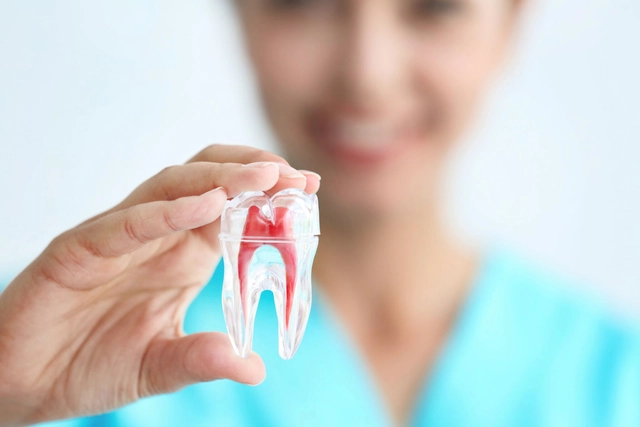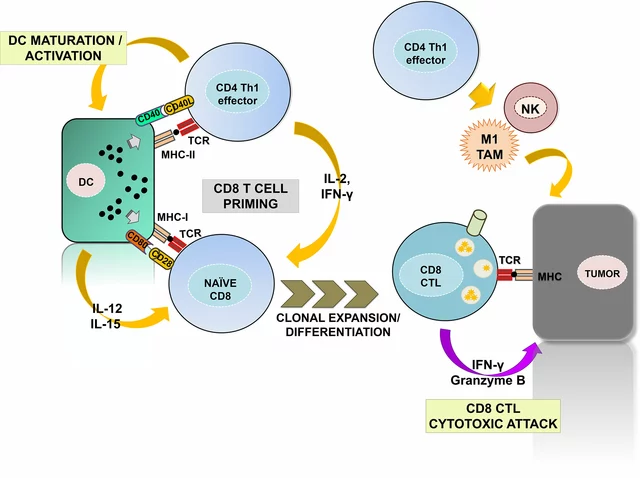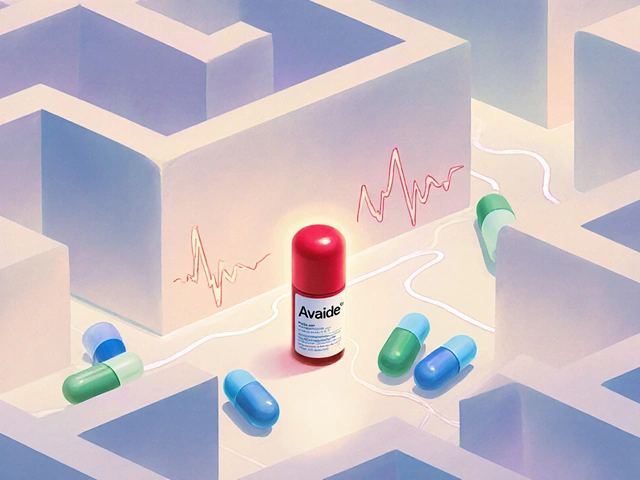Ethinylestradiol BP is a synthetic estrogen listed in the British Pharmacopoeia (BP) that forms the hormonal backbone of most combined oral contraceptives. Its high oral bio‑availability, strong estrogenic activity, and predictable pharmacokinetic profile have kept it at the core of women's reproductive health for over five decades.
Scientists are now revisiting the molecule with fresh eyes: new delivery platforms, tighter environmental controls, and genetics‑driven dosing are reshaping how clinicians and regulators view this classic drug. This article walks you through the most consequential research streams, what they mean for everyday users, and where the field is headed.
Regulatory Landscape: BP vs. USP Standards
While British Pharmacopoeia (BP) defines the assay range, impurity limits, and dissolution criteria for Ethinylestradiol, the United States Pharmacopeia (USP) applies slightly different tolerances. The BP standard typically allows a potency range of 95‑105% of the labeled amount, whereas USP permits 98‑102%.
This divergence matters for global manufacturers: a batch that clears USP may need re‑testing before it can be sold in Europe or Australia. Recent harmonisation talks aim to align impurity thresholds for endocrine‑disrupting by‑products, a move that could streamline production while tightening safety nets.
Latest Clinical Trials: Efficacy and Safety Trends
Three large‑scale PhaseIII studies published in 2024‑2025 have focused on newer low‑dose formulations. The PULSE‑2024 trial compared 20µg Ethinylestradiol BP with 30µg in a standard COC regimen across 12,000 women. Results showed comparable pregnancy‑prevention rates (0.1% vs 0.09%) but a 15% reduction in migraine‑type headaches in the low‑dose group.
Another study, ECO‑ENHANCE, examined the impact of a novel micro‑encapsulated Ethinylestradiol particle that releases the drug over 24hours. Participants reported smoother cycle flow and fewer breakthrough bleeds, suggesting that controlled‑release may improve user satisfaction without compromising efficacy.
Formulation Innovations: From Micro‑Encapsulation to Transdermal Patches
Beyond pills, researchers are engineering alternative delivery systems. Nanoparticle‑mediated patches embed Ethinylestradiol BP in a lipid matrix, delivering a steady 0.03mg per day through the skin. Early pharmacokinetic data indicate a half‑life extension from 24hours (oral) to roughly 48hours (patch), halving dosing frequency.
Another promising avenue is the vaginal ring that slowly releases 0.02mg of Ethinylestradiol alongside a progestin. Clinical safety profiles match oral options, while user surveys highlight convenience for women who dislike daily pills.
Environmental Impact: Tackling Estrogenic Contamination
When Ethinylestradiol BP enters waterways via wastewater, it behaves as an environmental estrogen, disrupting fish reproduction at concentrations as low as 5ng/L. Recent advances in wastewater treatment-especially advanced oxidation processes (AOP) and membrane bioreactors-have cut detectable levels by up to 90% in pilot plants across Europe.
Regulators in the EU are drafting guidelines that would require manufacturers to label products with a "eco‑friendly" badge if their manufacturing process includes certified estrogen‑removal steps. This move could push the industry toward greener synthesis pathways, such as bio‑catalytic routes that avoid chlorinated intermediates.
Pharmacogenomics: Personalising the Dose
Genetic variations in the CYP3A4 enzyme affect how quickly Ethinylestradiol BP is metabolised in the liver. A 2025 cohort study of 2,500 women found that carriers of the CYP3A4*22 allele had a 30% higher plasma exposure, correlating with increased risk of venous thromboembolism.
These findings have spurred the development of point‑of‑care genetic tests that can guide clinicians to prescribe a reduced‑dose COC for high‑risk genotypes, improving safety without sacrificing contraceptive efficacy.

Emerging Alternatives and the Future Market
While Ethinylestradiol BP remains the gold standard, newer synthetic estrogens like Estradiol valerate are gaining traction for their more natural metabolic profile. However, their lower potency often requires higher milligram doses, which can increase side‑effects.
Market analysts predict that by 2030, the global COC market will shift 12% toward low‑dose and alternative‑delivery products, driven by consumer demand for fewer side effects and better environmental stewardship.
Related Concepts and Connected Topics
Understanding the future of Ethinylestradiol BP also means looking at broader themes such as:
- Combined oral contraceptives (COCs) - the drug class that pairs Ethinylestradiol with a progestin.
- Estrogen receptor modulation - how synthetic estrogens bind to ERα and ERβ, influencing tissue‑specific effects.
- Pharmacokinetics - absorption, distribution, metabolism, and excretion pathways specific to Ethinylestradiol BP.
- Endocrine disruptors - broader category of chemicals that interfere with hormone systems, of which Ethinylestradiol is a key example in wastewater studies.
- Personalised medicine - applying genetics to tailor contraceptive dosing.
Readers interested in deeper dives can explore topics like "synthetic progestins", "oral contraceptive compliance“, or "pharmaceutical wastewater treatment" as logical next steps.
Comparison Table: Ethinylestradiol BP vs. USP Standard vs. Estradiol Valerate
| Attribute | Ethinylestradiol BP | Ethinylestradiol USP | Estradiol Valerate |
|---|---|---|---|
| Potency (relative to 100µg estradiol) | ≈100‑fold | ≈100‑fold | ≈1‑fold |
| Half‑life (hours) | 24 | 24 | 12‑18 |
| Regulatory assay range | 95‑105% | 98‑102% | 97‑103% |
| Typical oral dose in COC | 20‑35µg | 20‑35µg | 1‑2mg |
| Environmental estrogenicity (EC50 ng/L) | ≈0.2 | ≈0.2 | ≈5 |
Outlook and Practical Take‑aways
For clinicians, the key message is simple: stay alert to low‑dose options, consider pharmacogenomic testing for high‑risk patients, and discuss environmental packaging choices with patients who care about eco‑impact.
Manufacturers should accelerate adoption of greener synthesis routes and invest in extended‑release technologies that promise better adherence and fewer side effects.
Regulators are likely to tighten impurity limits and possibly introduce an "environmental safety" label for products that meet strict wastewater‑removal standards.
Overall, Ethinylestradiol BP isn’t disappearing-it’s evolving. Its next decade will be marked by smarter dosing, cleaner manufacturing, and a tighter link between hormone science and personal health goals.
Frequently Asked Questions
What makes Ethinylestradiol BP different from the USP version?
Both contain the same active molecule, but the BP standard allows a slightly wider potency range (95‑105% vs 98‑102%). This affects how manufacturers validate batches for different markets.
Are low‑dose Ethinylestradiol pills safer for migraine sufferers?
Recent trials (e.g., PULSE‑2024) show a 15% drop in migraine‑type headaches with 20µg doses compared to 30µg, without losing contraceptive efficacy.
How does wastewater treatment reduce Ethinylestradiol contamination?
Advanced oxidation processes and membrane bioreactors can break down the estrogen molecule, achieving up to 90% removal in pilot studies across the EU.
Can genetic testing influence my contraceptive choice?
Yes. If you carry the CYP3A4*22 allele, you may metabolise Ethinylestradiol slower, raising blood levels and clot risk. A simple saliva test can flag this, allowing your doctor to prescribe a lower dose.
Are there non‑oral options for Ethinylestradiol?
Yes. Vaginal rings and transdermal patches are in late‑stage development, delivering steady low‑dose hormone levels and eliminating daily pill reliance.
Will new environmental regulations affect the price of birth‑control pills?
Potentially. Adding green manufacturing steps may raise production costs, but economies of scale and regulatory incentives could offset price hikes over time.





Jenni Waugh
September 22, 2025 AT 10:23This is the most ridiculous thing I’ve read all week. So now we’re giving estrogen patches a gold star because they’re ‘eco-friendly’? Let me guess - the same companies that pollute rivers are now selling you a sticker that says ‘I care about fish.’ 😒
Meanwhile, women are still dying from blood clots because someone thought ‘20µg is safe enough’ without checking their CYP3A4 status. Priorities, people.
Theresa Ordonda
September 23, 2025 AT 17:44Okay but like… 🤡 the fact that we’re still using a molecule from the 1950s and calling it ‘innovation’ is wild. 🧪✨
They just wrapped it in a new package and called it a ‘micro-encapsulated breakthrough.’ Bro, it’s still ethinylestradiol. The only thing that changed is the marketing budget.
Also, why is no one talking about how this stuff turns male fish into hermaphrodites? We’re literally terraforming aquatic ecosystems with birth control. 🐟💔
And don’t even get me started on the ‘eco-badge’ - next they’ll sell us ‘carbon-neutral tampons’ made from recycled unicorn tears.
Judy Schumacher
September 24, 2025 AT 22:43Let us not confuse pharmacological refinement with genuine progress. The entire paradigm remains fundamentally flawed: a synthetic estrogen, derived from petrochemical intermediates, administered systemically to a population of women who are statistically more likely to possess metabolic polymorphisms that amplify thrombotic risk - all while environmental regulators scramble to mitigate its aquatic bioaccumulation.
It is not evolution. It is rebranding.
One cannot solve a systemic crisis with incremental dosage adjustments and lipid matrices. The underlying assumption - that hormonal suppression is the optimal solution for reproductive autonomy - remains unchallenged, unexamined, and ethically suspect.
Where is the discourse on non-hormonal alternatives? On societal structures that enable pregnancy prevention without endocrine interference? On the fact that this molecule was never designed for long-term, population-wide use?
Instead, we celebrate a 15% reduction in migraines as a triumph. A tragedy.
Megan Raines
September 25, 2025 AT 05:49So… the patch lasts 48 hours? That’s cool. But why does it still cost $50 a month if it’s ‘just’ a different delivery method? 🤔
Also, can we talk about how ‘low-dose’ is just corporate speak for ‘we found the minimum amount that still works so we can charge you the same price’?
Mamadou Seck
September 25, 2025 AT 09:58also who cares if the fish are turning into hermaphrodites we got bigger problems like inflation and school shootings
Anthony Griek
September 27, 2025 AT 04:00It’s fascinating how the science here is actually pretty solid - the pharmacokinetics, the genetic profiling, the wastewater tech. But the conversation around it? So fragmented.
We’ve got people screaming about fish, others about blood clots, and pharma just quietly launching new products with ‘eco-labels’ that mean nothing without enforcement.
Maybe the real breakthrough isn’t the molecule - it’s the need for better public dialogue. Not just between doctors and patients, but between scientists, regulators, and everyday people who just want to know if this stuff is safe - for them, and for the planet.
Norman Rexford
September 28, 2025 AT 06:19we got patches that last two days and genetic tests for your pill?? that’s next level innovation right there
also if your fish are turning gay then maybe they need to get a job and stop partying in the river 😂
Wayne Keller
September 28, 2025 AT 13:37Low-dose pills reducing migraines by 15%? That’s huge for people who suffer from them.
And the patch? If it helps someone remember to take their pill once a week instead of every day, that’s a win for adherence.
Genetic testing is the real game-changer - knowing your CYP3A4 status could literally save your life.
Let’s not get distracted by the ‘eco-label’ hype. The real win here is personalized, safer care. Keep pushing that forward.
Shana Labed
September 29, 2025 AT 09:10OMG I AM SO EXCITED 🤩
Low-dose + patches + genetic testing + eco-certified manufacturing?? This is the FUTURE, BABY!!
Imagine walking into a pharmacy and your pill is tailored to your DNA and comes in a compostable blister pack?? 🌱💊
They’re finally listening - not just to our bodies, but to the planet!!
Someone get me a vaginal ring STAT. I’m ready to be a hormone-hacking, eco-conscious queen. 🌺👑
Also, if you’re still on the 30µg version and you have migraines… honey, you’re doing it wrong.
California Daughter
September 29, 2025 AT 22:31Wait - so the BP allows 95–105% potency… and that’s ‘worse’ than USP’s 98–102%? But… isn’t that just a 3% difference? Like… is this really a ‘divergence’ or are we just overcomplicating it because regulators need to justify their jobs?
Also, ‘micro-encapsulated’ sounds like a TikTok trend, not a pharmaceutical breakthrough.
And why is everyone so shocked that estrogen gets into water? We flush pills down the toilet. What did you expect? A magic unicorn that eats hormones?
Vishwajeet Gade
October 1, 2025 AT 17:39why now we need patches and genetic tests? just give us pill and stop wasting money
also fish dont care about your labels
Casey Crowell
October 2, 2025 AT 03:53Honestly? I’m just happy we’re finally talking about this like it matters.
It’s not just about birth control - it’s about how we treat women’s bodies, how we treat the planet, and how we use science to actually serve people instead of profits.
Genetic testing? That’s dignity.
Wastewater tech that removes 90% of estrogen? That’s responsibility.
Low-dose options? That’s care.
Let’s not let cynicism kill this momentum. We’re on the brink of something real.
Shanna Talley
October 3, 2025 AT 07:23It’s beautiful to see science finally catching up to the lived experience of women.
For decades, we were told to just ‘take it’ - no questions, no testing, no alternatives.
Now we’re seeing real progress: personalized dosing, less side effects, cleaner manufacturing.
It’s not perfect - but it’s moving. And that’s worth celebrating.
Keep asking questions. Keep demanding better. We’re not just patients - we’re partners in this.
Gina Damiano
October 5, 2025 AT 01:41So… if I get a patch, does that mean I can skip my pill on days I’m drunk? Or is that still a no?
Also, can I get a version that doesn’t make me cry during rom-coms? Asking for a friend.
Emily Duke
October 5, 2025 AT 15:55Ugh. Another ‘breakthrough’ that benefits Big Pharma and makes women feel guilty for not being ‘eco-conscious’ enough.
So now I’m supposed to get a genetic test, buy a $70 patch, and feel bad if I don’t? Thanks, capitalism.
And what about the women who can’t afford any of this? Oh right - they’ll just keep taking the old pill and hoping they don’t clot.
Also - fish? Who cares? The real crisis is that we still treat women’s health like an afterthought.
Stacey Whitaker
October 7, 2025 AT 14:50Love that they’re finally looking at environmental impact. We’ve been dumping hormones into rivers for 60 years and acting like it’s normal.
Also - patches? Yes. I’ve missed three pills in a row because I forgot. A patch that lasts two days? That’s life-changing.
And the genetic testing? I didn’t know CYP3A4 was a thing until last week. Now I’m obsessed.
Small wins. Real impact.
Kayleigh Walton
October 8, 2025 AT 14:17For anyone feeling overwhelmed by the science - you’re not alone.
But here’s the simple version: lower dose = fewer headaches. Patch = less forgetting. Genetic test = less risk. Cleaner manufacturing = healthier planet.
It’s not magic. It’s medicine evolving. And that’s worth supporting - even if it’s imperfect.
Keep asking questions. Keep demanding better. You deserve it.
Stephen Tolero
October 10, 2025 AT 08:05What is the bioavailability difference between oral ethinylestradiol BP and the transdermal formulation? Is the Cmax reduced? What is the AUC comparison?
Brooklyn Andrews
October 11, 2025 AT 09:15Finally someone’s talking about the environmental stuff. We’ve been dumping this crap into our waterways for decades. It’s not ‘science fiction’ - it’s happening right now.
And yeah, the patches and rings? Way better than swallowing a pill every day. I’ve been on the ring for a year - zero breakthrough bleeding, zero daily stress.
Also - if you’re still using the 30µg version and you’re over 35? Please, for your own sake, ask your doctor about low-dose.
Jenni Waugh
October 13, 2025 AT 02:45Oh wow, so now we’re pretending the ‘eco-label’ is a solution? Let me guess - the same pharma giant that makes this patch also owns the wastewater plant that’s ‘removing’ the estrogen. What a coincidence.
And don’t get me started on how ‘personalized’ this is - only rich women can afford genetic tests and $70 patches. The rest of us? Still taking the old pill and hoping we don’t clot.
It’s not progress. It’s performance.